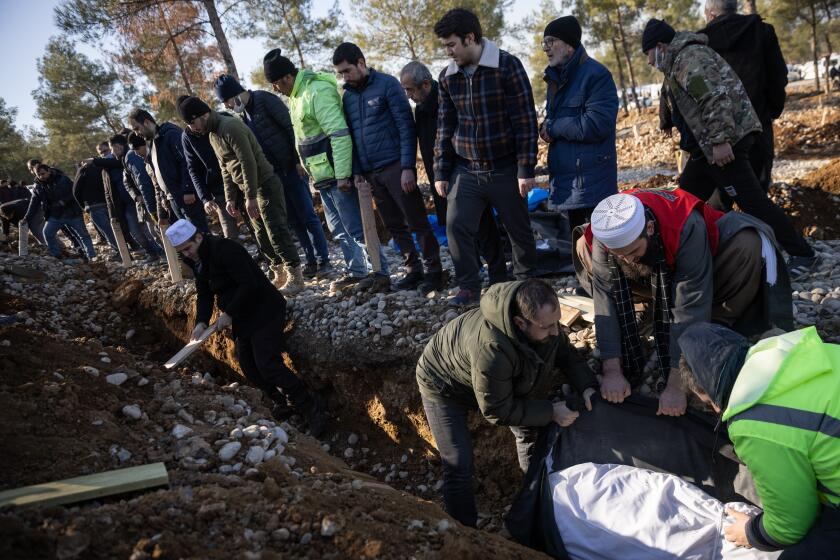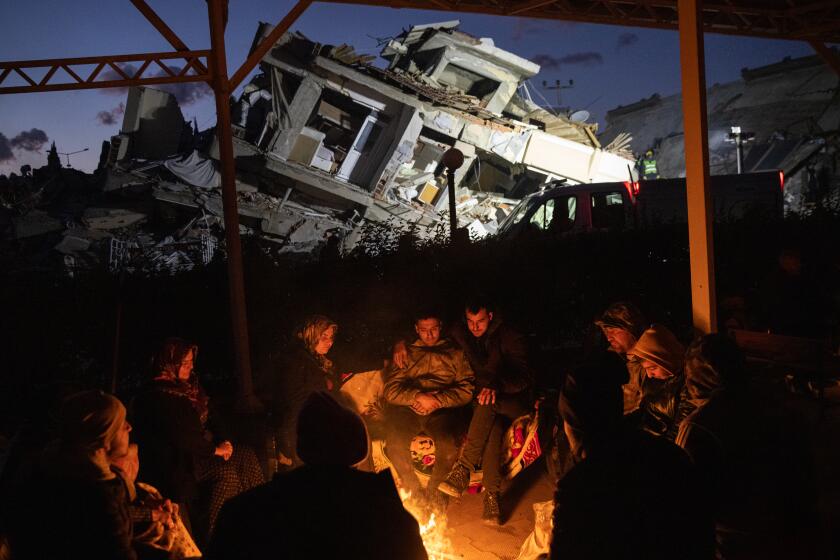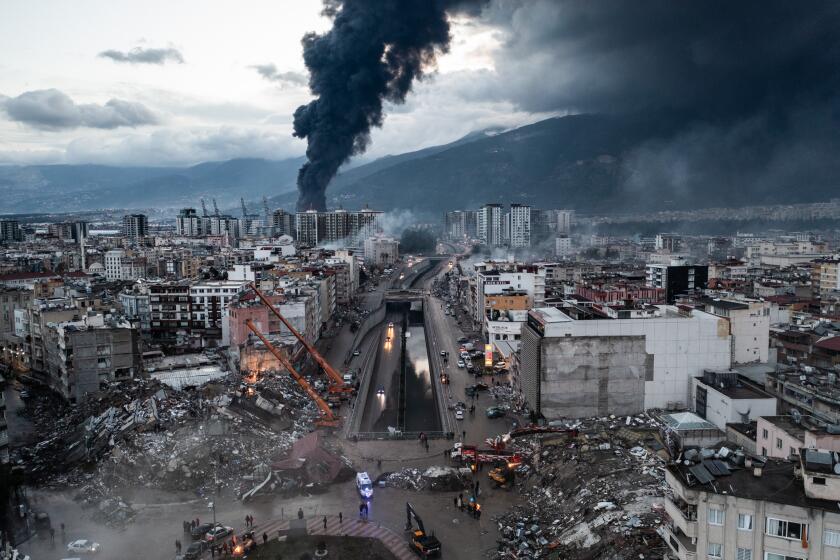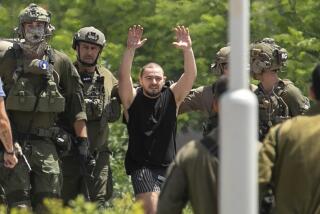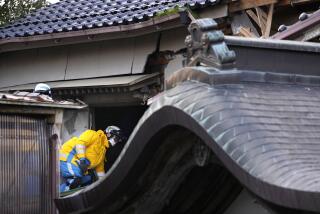Rescuers in Turkey rejoice as more quake survivors emerge from rubble
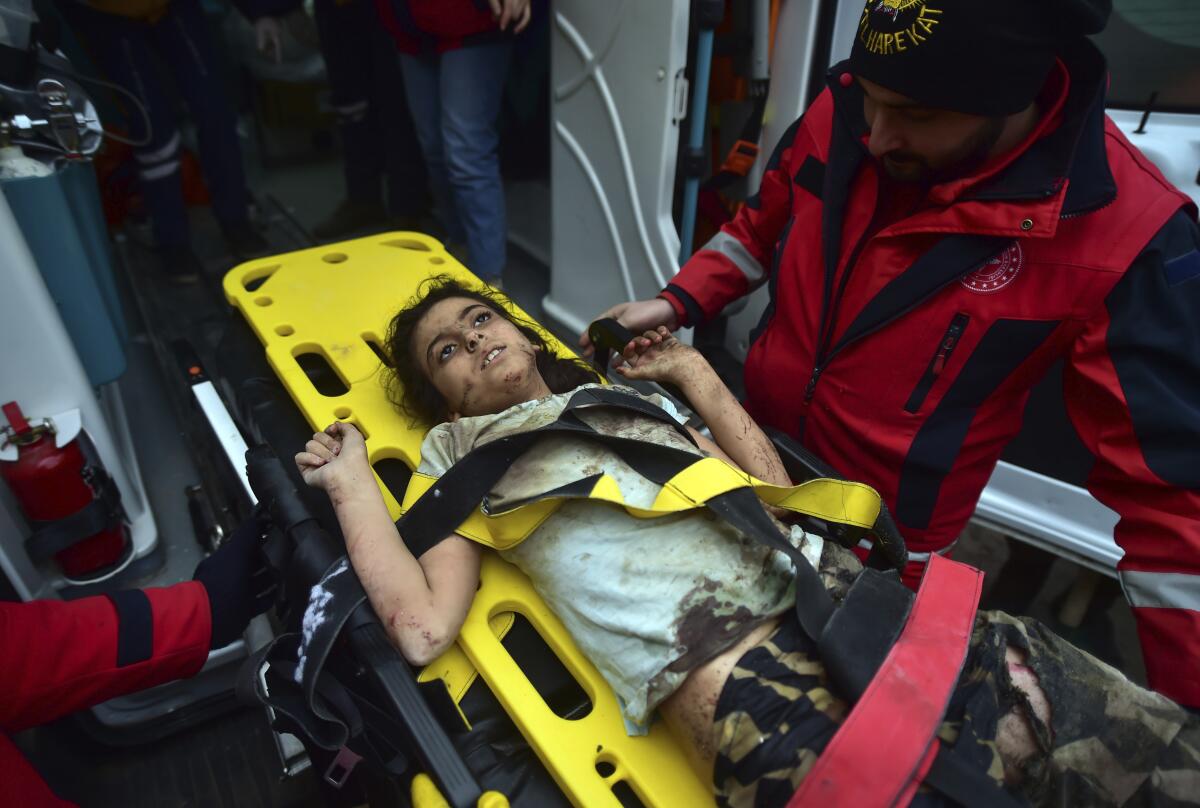
ISKENDERUN, Turkey — Six relatives huddled in a small air pocket, day after day. A desperate teenager grew so thirsty that he drank his own urine. Two frightened sisters were comforted by a pop song as they waited for rescuers to free them.
These earthquake survivors were among more than a dozen people pulled out of the rubble alive Friday after spending more than four days trapped in frigid darkness after the disaster that struck Turkey and Syria.
The unlikely rescues, coming so long after Monday’s magnitude 7.8 quake brought down thousands of buildings, offered fleeting moments of joy amid a catastrophe that has killed nearly 24,000 people — by the latest official tally — injured at least 80,000 others and left millions homeless.
In the Mediterranean coastal city of Iskenderun, a crowd chanted “God is great!” as Haci Murat Kilinc and his wife, Raziye, were carried on stretchers to a waiting ambulance.
“You’ve been working so many hours, God bless you!” a relative of the couple told one of their rescuers.
One rescue worker said that Kilinc had been joking with crew members while still trapped beneath the rubble, trying to boost their morale.
Excavators dig out 200-foot trenches in southern Turkey to bury the bodies of earthquake victims. The death toll rises to more than 20,000.
Two hours earlier in Kahramanmaras, one of the cities closest to the epicenter, rescuers embraced and chanted their thanks to God after pulling a man from his collapsed home.
In Adiyaman, a hard-hit city of more than a quarter-million people, rescuers and onlookers suppressed their joy so as not to frighten 4-year-old Yagiz Komsu as he emerged from the debris, according the HaberTurk television, which broadcast the rescue live.
To distract him, he was given a jelly bean. Teams later rescued his 27-year-old mother, Ayfer Komsu, who had a broken rib.
But the flurry of dramatic rescues could not obscure the devastation spread across a sprawling border region that is home to more than 13.5 million people. Entire neighborhoods of high-rises have been reduced to rubble, and the quake has already killed more people than Japan’s Fukushima earthquake and tsunami in 2011, with many more bodies yet to be recovered and counted.
Relatives wept and chanted as rescuers pulled 17-year-old Adnan Muhammed Korkut from a basement in Gaziantep, another major city near the quake’s epicenter. He had been trapped for 94 hours, forced to drink his own urine to survive.
“Thank God you arrived,” he said, embracing his mother and others who leaned down to kiss and hug him as he was being loaded into an ambulance.
After the Turkey earthquake, scenes of suffering and frustration play out as families and rescuers search amid rubble and the death toll hits 16,000.
For one of the rescuers, identified only as Yasemin, Adnan’s survival hit home.
“I have a son just like you,” she told him after giving him a warm hug. “I swear to you, I have not slept for four days. … I was trying to get you out.”
Elsewhere, HaberTurk television said rescuers had identified nine people trapped inside the remains of a high-rise apartment block in Iskenderun and pulled out six of them, including a woman who waved at onlookers as she was being carried away on a stretcher. The crowd shouted “God is great!” after she was brought out.
The building was only 600 feet from the Mediterranean Sea and narrowly avoided being flooded when the massive earthquake sent water surging into the city center.
Video of another rescue effort in Kahramanmaras showed an emergency worker playing a pop song on his smartphone to distract the two teenage sisters as they waited to be freed.
There were still more stories: A German team said it worked for more than 50 hours to free a woman from a collapsed house in Kirikhan. And a trapped woman could be heard speaking to a team trying to dig her out in video broadcast by HaberTurk television. She told her would-be rescuers that she had given up hope of being found — and prayed to be put to sleep because she was so cold. The station did not say where the operation was taking place.
Even though experts say trapped people can live for a week or more, the odds of finding more survivors are long.
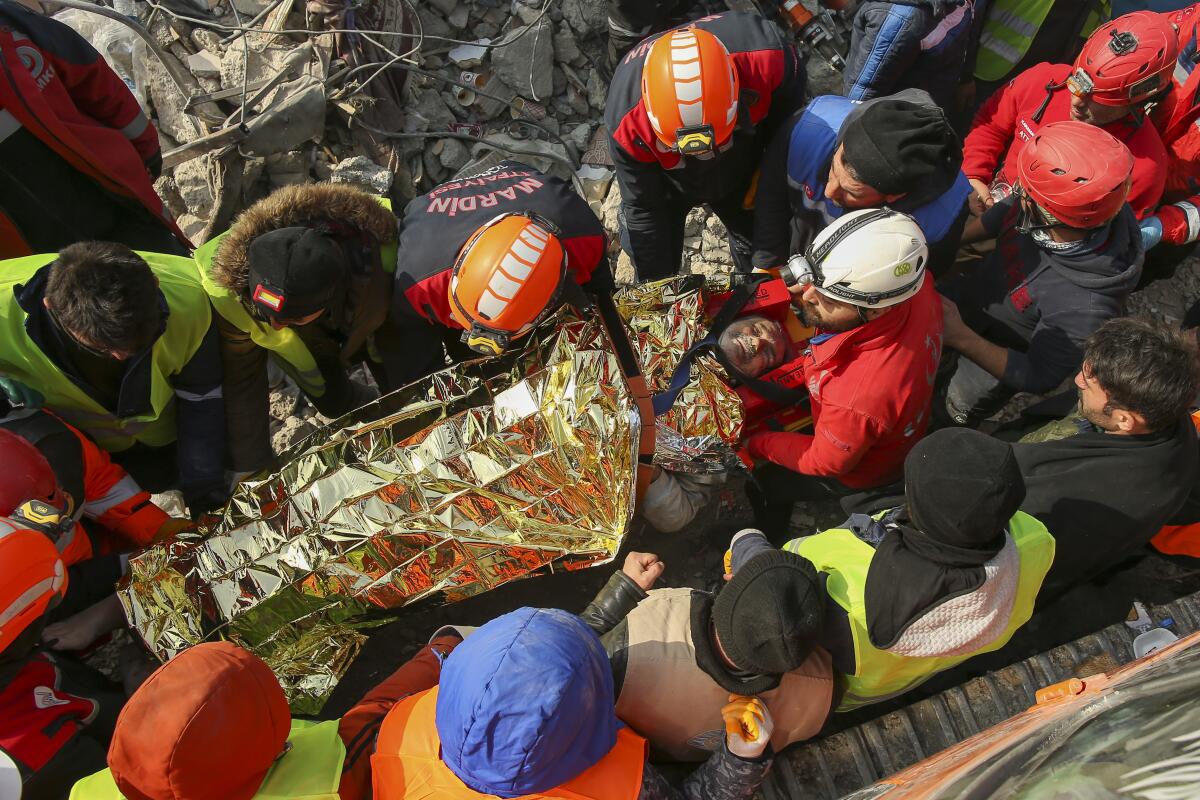
Death loomed everywhere: Morgues and cemeteries were overwhelmed, and bodies wrapped in blankets, rugs and tarps lay in the streets of some cities.
Temperatures remained below freezing across the large region, and many people have no shelter. The Turkish government has distributed millions of hot meals, as well as tents and blankets, but was still struggling to reach many people in need.
The disaster compounded suffering in a region beset by Syria’s 12-year civil war, which has displaced millions of people within the country and left them dependent on aid. The fighting sent millions more to seek refuge in Turkey.
The conflict has isolated many areas of Syria and complicated efforts to get aid in. The United Nations said the first earthquake-related aid convoy crossed from Turkey into northwestern Syria on Friday — a day after an aid shipment planned before the disaster arrived.
The U.N. refugee agency estimated that as many as 5.3 million people have been left homeless in Syria. Sivanka Dhanapala, the country representative in Syria for UNHCR, told reporters Friday that the agency is focusing on providing tents, plastic sheeting, thermal blankets, sleeping mats and winter clothing.
The earthquakes in Turkey show how big quakes are more likely to cause big aftershocks far from the epicenter. The same could happen in California.
Syrian President Bashar Assad and his wife, Asmaa, visited survivors at the Aleppo University Hospital, according to Syrian state media. It was the leader’s first public appearance in an affected area of the country since the disaster. He then visited rescuers in one of the city’s hardest-hit areas.
Aleppo has been scarred by years of heavy bombardment and shelling — much of it by the forces of Assad and his ally, Russia — and it was among the cities most devastated by the earthquake.
The Syrian government also announced that it will allow aid to reach all parts of the country, including areas held by insurgent groups in the northwest.
Also Friday, the outlawed Kurdistan Workers Party, or PKK, declared a cease-fire in its separatist insurgency in Turkey’s mainly Kurdish southeast, including some areas affected by the quake.
Turkey’s disaster management agency said more than 20,200 people had been confirmed killed in the disaster so far in Turkey, with more than 80,000 injured.
More than 3,500 have been confirmed killed in Syria, bringing the official total number of dead to 23,700.
Some 12,000 buildings in Turkey have either collapsed or sustained serious damage, according to Turkey’s minister of environment and urban planning, Murat Kurum. Turkey’s vice president, Fuat Oktay, said more than 1 million people were being housed in temporary shelters.
Engineers suggested that the scale of the devastation was partly a consequence of lax enforcement of building codes.
Alsayed reported from Bab al-Hawa, Syria. Bilginsoy reported from Istanbul. Associated Press journalists Robert Badendieck in Istanbul; Mehmet Guzel in Antakya, Turkey; Emrah Gurel and Yakup Paksoy in Adiyaman, Turkey; Suzan Fraser in Ankara, Turkey; Bassem Mroue and Abby Sewell in Beirut; Salar Salim in Erbil, Iraq; Hogir al-Abdo in Manbij, Syria; and David Rising in Bangkok contributed to this report.
More to Read
Sign up for Essential California
The most important California stories and recommendations in your inbox every morning.
You may occasionally receive promotional content from the Los Angeles Times.
